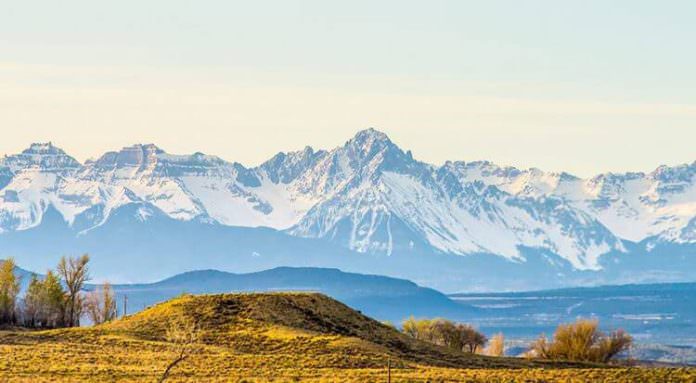
For oil and gas opponents in Colorado, this is not the way 2017 was supposed to begin.
In last year’s election, liberal billionaires Tom Steyer and George Soros poured money into the state’s down-ballot races. But it didn’t work. Republicans kept their one-seat majority in the Colorado Senate. They even defended their majority on the University of Colorado’s Board of Regents, which has been a target of fossil-fuel divestment activists for years.
Hillary Clinton, who was ready to continue the Obama administration’s energy and environmental policies, carried Colorado but lost the presidential election to Donald Trump. Republicans kept their majorities in Congress and Colorado. Also, Republican Rep. Mike Coffman — targeted by national environmental groups like the Sierra Club and League of Conservation Voters — decisively won reelection to a House seat in the Denver suburbs.
It has been a stunning turnaround. Two weeks before the election, environmental groups and their allies in the state legislature were confident of victory and openly discussed plans for a new climate committee. It would have pushed bigger mandates for renewable energy, new restrictions on Colorado’s fossil fuel industry and the continuation of the Obama administration’s energy and environmental policies.
After the election, the new committee will stay, but under the control of Republicans in the Colorado Senate. Instead of defending the Obama era, the committee will focus on efforts to reverse the executive-branch programs that defined the 44th president’s environmental agenda and examine how Colorado’s economy may benefit from these proposed federal regulatory reforms.
And on top of these political changes, supporters and detractors of the state’s energy industry have something else to consider — signs of a comeback in oil and gas development. In late November, OPEC nations reached an agreement to curb production, boosting oil prices and the number of rigs operating in Colorado. By the last week of December, Colorado’s rig count had climbed to 28, the highest number in more than a year.
Under the circumstances, it’s natural to focus on Republican moves at the federal and state level, especially since Trump’s victory was a big surprise. But the post-election moves of Democrats and environmental activists in Colorado are equally fascinating and will also have long-term political and policy consequences.
The 2016 election exposed deep divisions within the Democratic coalition over the role of fossil fuels. On one side, there’s the Tom Steyer wing, which wants to eliminate fossil fuels in the short term, mandate the use of more costly renewable sources, and give the U.S. Environmental Protection Agency expansive new powers over the state-level energy decisions. On the other side, there’s the blue-collar wing that supports oil, natural gas and coal production, and worries about job losses from anti-fossil fuel laws and EPA regulations.
In 2016, Steyer and national environmental groups spent well over $100 million in a crusade to make the environment — and especially climate change — a top campaign issue. But the move backfired.
Some union leaders lashed out against Steyer in public. “His vision of leaving oil, natural gas, and other fossil fuels in the ground kills jobs, drives up energy costs, and threatens to strangle our economy,” said the Laborers’ International Union of North America’s President Terry O’Sullivan in a letter to the American Federation of Labor and Congress of Industrial Organizations several months before Election Day. But the climate push continued, weakening Clinton’s support among blue-collar voters in the key battleground states of the industrial Midwest.
Nationally, the Steyer wing of the Democratic coalition isn’t giving any ground after the election. Despite the outcome, the California billionaire and environmental activist told Reuters, “We wouldn’t do anything differently.” He’s also sticking with the claim that so-called green jobs will compensate for layoffs caused by anti-fossil fuel policies — an argument that clearly didn’t work with blue-collar voters.
“We probably have almost 10 times as many people working in clean energy just in my home state as there are coal miners in the entire United States of America,” Steyer told CNN.
In Colorado, the early evidence suggests that Democratic officials and environmental groups are doubling down on the Steyer strategy. Senate Minority Leader Lucia Guzman (D-Denver), a member of the new energy committee, says members of her party will stand strong, according to The Colorado Statesman.
Guzman is joined on the committee by Sen. Matt Jones (D-Louisville), who also holds the newly created position of Deputy Minority Leader for Conservation, Clean Energy and Climate Change. According to the Durango Herald, Jones has “led many of the anti-fracking fights at the Capitol,” and was a staunch supporter of Obama’s executive branch actions against the fossil-fuel industry.
“We have to be very aggressive with these rules,” Jones told an EPA field hearing in Denver on the EPA’s Clean Power Plan. “EPA, stay strong,” he added. Elsewhere, Jones has stated, “We need to keep Colorado an attractive state … not an extractive state.”
Environmental groups in Colorado are following the lead of their national counterparts, vowing to fight any changes to Obama-era energy policies. On federal lands, for example, efforts to reverse years of delayed and withdrawn oil and gas leasing will be strongly resisted, according to the WildEarth Guardians. “[I]t’s going to be watchdogging like we’ve never watchdogged before,” the organization’s Climate and Energy Program Director Jeremy Nichols told the Grand Junction Daily Sentinel.
Similarly, the proposed Jordan Cove LNG export terminal in Oregon — which would give western Colorado natural gas producers greater access to international markets — will continue to be fought by environmental activists. The debate over the project, which has hit roadblocks at the Federal Energy Regulatory Commission, is a prime example of the left’s deep divisions over energy policy. “The West Slope needs this,” John Swartout, an adviser to Colorado Gov. John Hickenlooper (D), told the Daily Sentinel in support of Jordan Cove.
So which faction of the Democratic coalition — environmental activists or energy pragmatists — will win this internal struggle? It’s still too soon to say. True, the Steyer wing is making the most noise right now. But there’s a difference between hard feelings over the election result, which may fade with time, and a prolonged campaign to rid the party of fossil-fuel supporters.
But this much is clear: Anti-fossil fuel activism is bad for the Colorado economy. While the state has a significant renewable industry and some very aggressive renewable energy mandates, 89 percent of the energy consumed in Colorado still comes from oil, natural gas and coal, according to data from the U.S. Energy Information Administration. And Colorado, of course, is one of the nation’s top producers of fossil fuels as well.
Walking away from Steyer and environmental activist groups may be a tough choice for some public officials in Colorado. But it would be the smart choice.
About the author: Simon Lomax is a Managing Director with FTI Consulting in Denver. He advises pro-business groups and holds an adjunct position with the Independence Institute, a free-market think tank. Before going into advocacy, he was a news reporter for 15 years and covered energy policy for Bloomberg News and Argus Media. The views expressed are his own. Contact him at [email protected].














